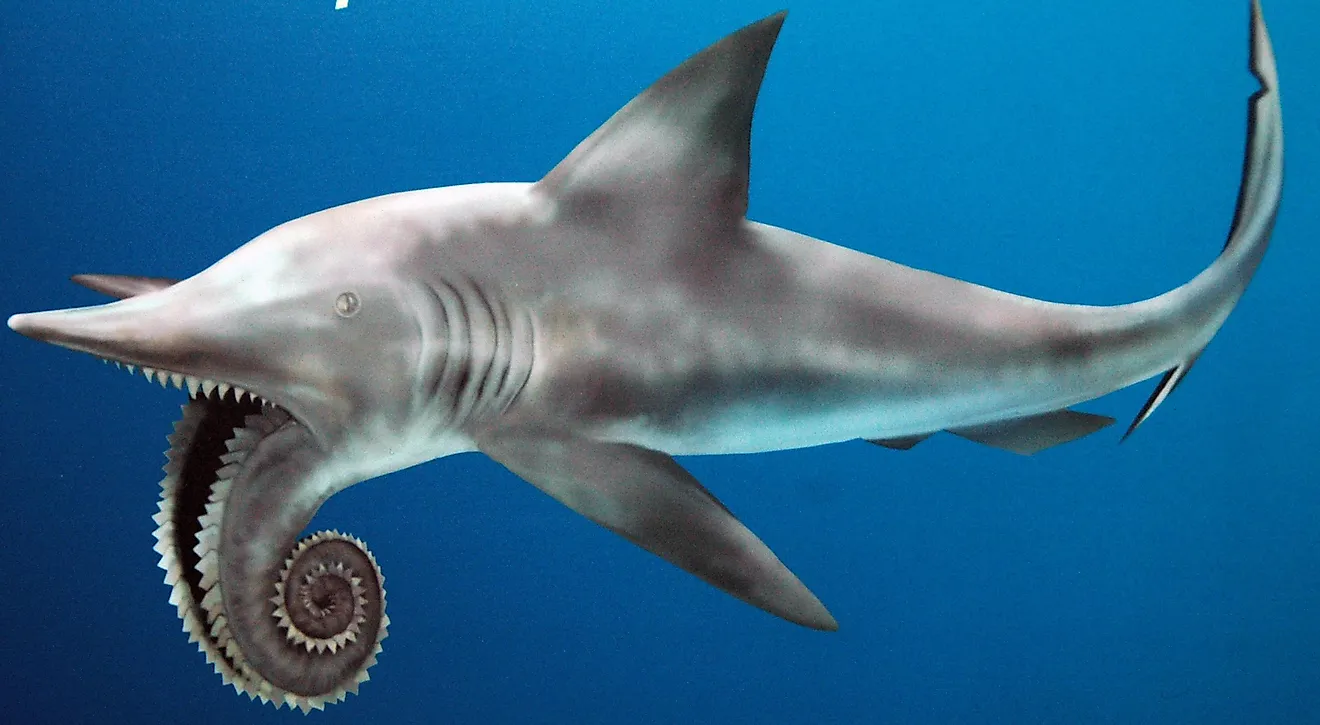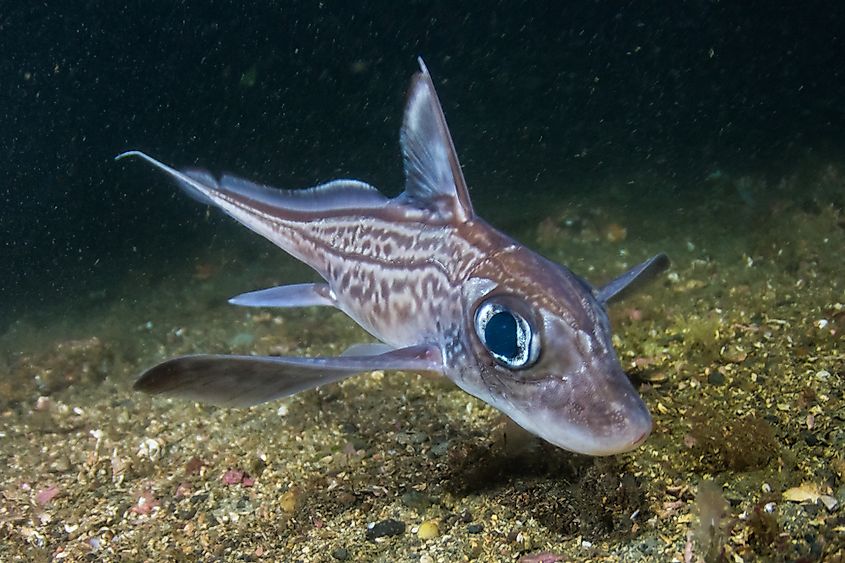What Are Helicoprions?

- The teeth of a Helicoprion formed a circular shape called a tooth whorl.
- The tooth whorls are the only remaining fossils of the Helicoprion.
- Scientists believe that the tooth whorl was placed at the front of the jaw of a Helicoprion.
Helicoprions are a species of shark-like fish that are extinct. They roamed the seas around North America, Asia, Eastern Europe, and Australia 290 million years ago. Their closest relatives among the living fish are considered to be the chimaeras. Scientists had difficulty reconstructing the anatomy of helicoprions because their fossils were exclusively made up of spiral clusters of teeth.
These clusters are called “tooth whorls,” and because of their unique pattern, it was challenging to discover what Helicoprions looked like. It was eventually found that the tooth whorl was a part of their lower jaw.
The Mystery Of the Tooth Whorl
The only fossils that were found of Helicoprions until 2013 were their teeth. The teeth were arranged in a pattern resembling a circular saw, called a “tooth whorl.” Since their skeletons were made of cartilage, their bodies would disintegrate completely once the decaying process started. This can be prevented but only under special circumstances that allow for preservation.
Scientists were not aware that the tooth whorls belonged to the lower jaw of the Helicoprions. The thing that made them realize this was the discovery of a similar species, related to the Helicoprion, called the Ornithoprion. The reason why this was so difficult to guess was the fact that the way the tooth whorls are built made it almost impossible to place it into the anatomy of a fish species.

However, it was concluded that the whorl contained all of the teeth produced by a Helicoprion. As it grew older, new teeth would show up and push the older teeth to the center of the whorl. Some scientists proposed that the upper jaw of a Helicoprion had no teeth whatsoever, besides a few crushing teeth that the whorls would cut against.
Attempts To Reconstruct A Helicoprion
They believed that the Helicoprion had a narrow skull with a long nose, reminiscent of a goblin shark. The fact that the tooth whorl was indeed in the lower jaw was not considered 100% certain for centuries. Many scientists tried to reconstruct the anatomy of the Helicoprion throughout the ages. One such reconstruction, dating from 2008, proposed that the tooth whorls should be placed deeper into the throat of the extinct fish. Other studies rejected that proposal.
Other studies made reconstructions suggesting that the tooth whorl was placed at the back of the jaw. However, since other species of extinct fish were discovered that also have similar tooth whorls, it was concluded that the Helicoprions had their whorls placed at the front of the jaw. One such similar species is the Onychodontiformes. The Helicoprion fossils were found mostly around Western North America, Mexico, Idaho, California, in the United States. Outside of the U.S., they were found in Western Australia, the Ural Mountains, and China. Scientists suggest that there were plenty of subspecies based on their habitat.
With all this being said, the final appearance of the Helicoprion remains a mystery. The images were changed and tweaked many times over the past century, and will probably continue to be modified in the future. For now, the exact placement of tooth whorl is still not entirely known, and we still have the rest of their anatomy to figure out.











